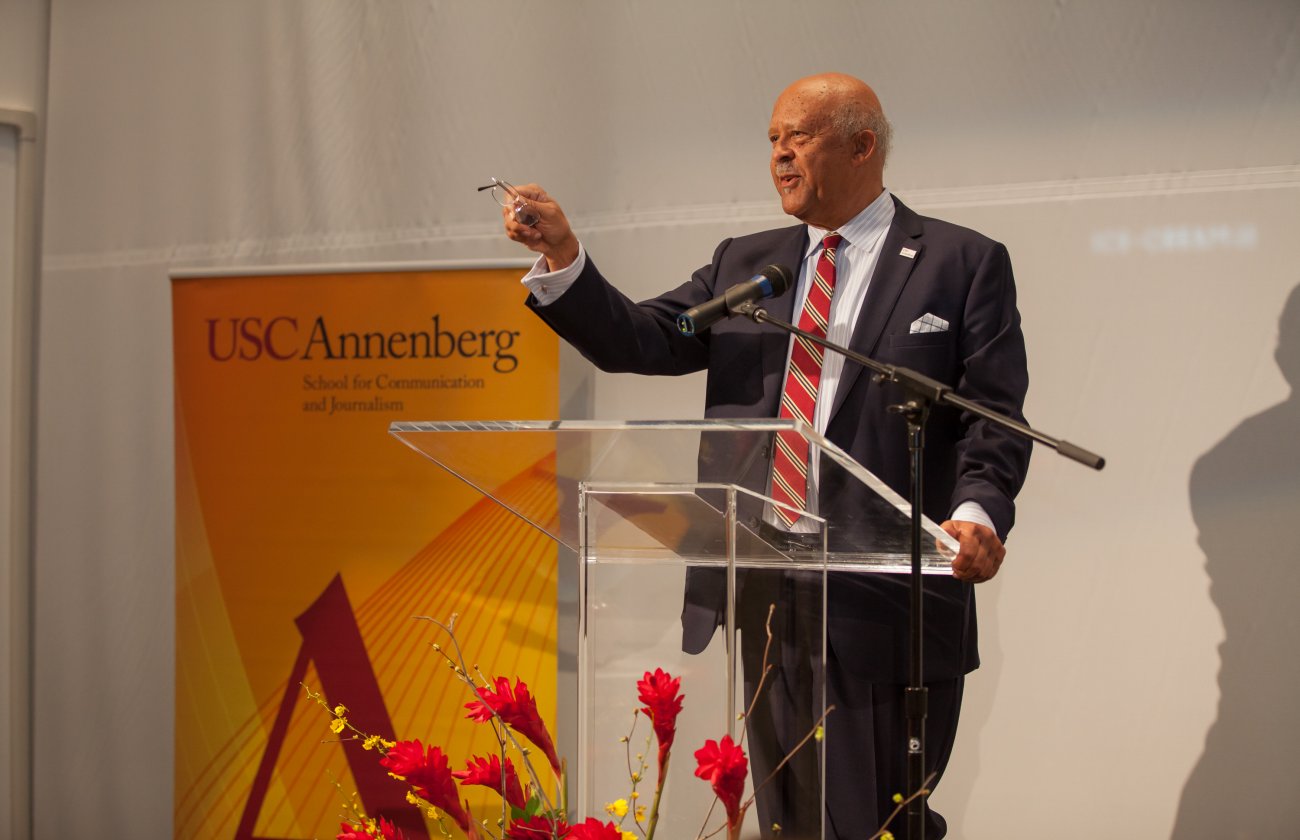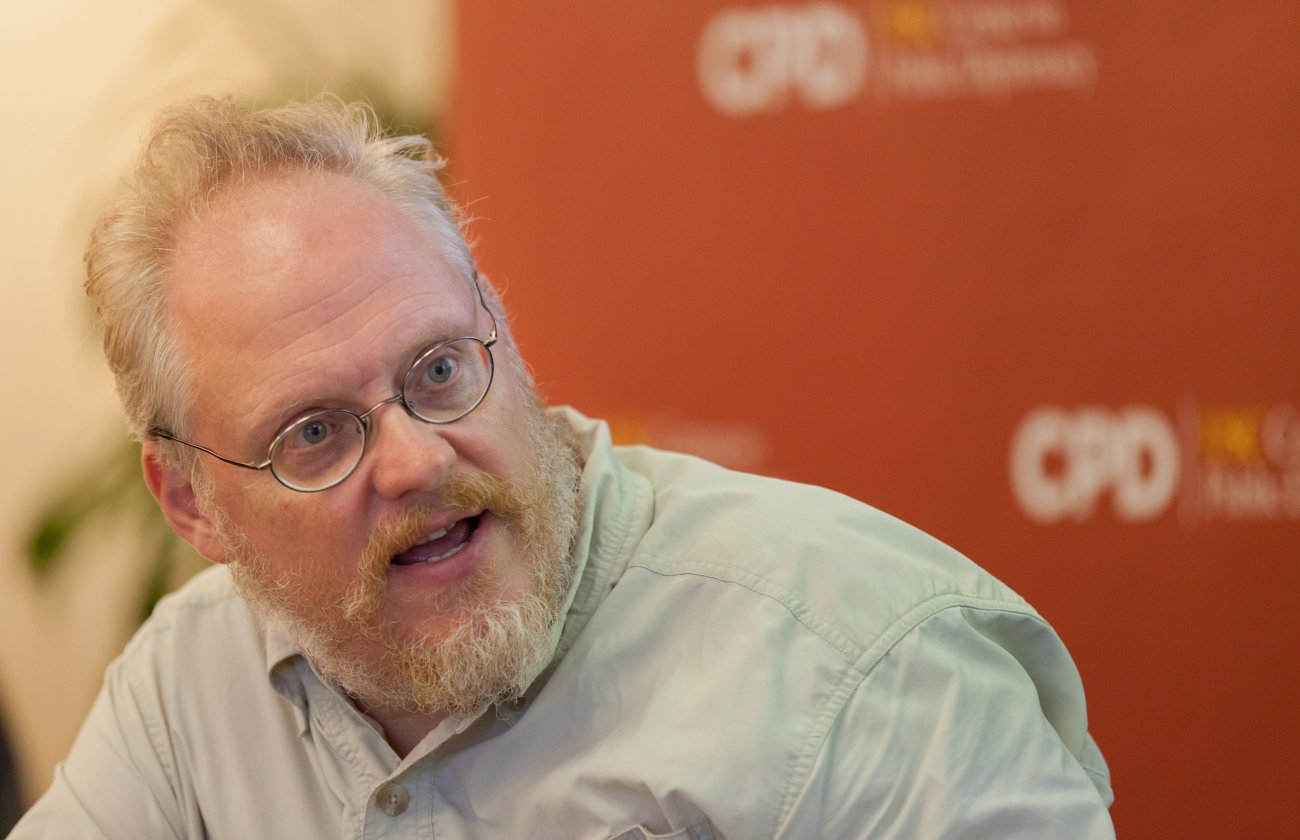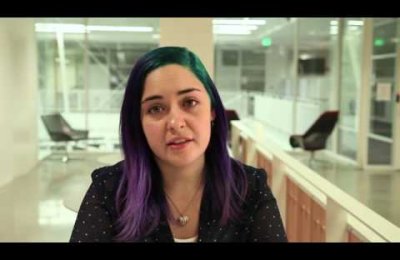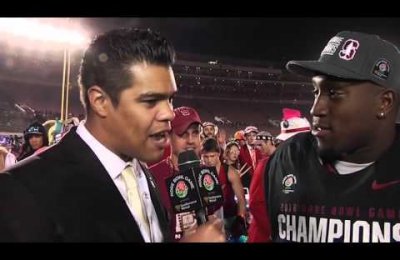By Jeremy Rosenberg
An experimental “immersive journalism” project with a USC Annenberg genesis has been selected to appear at the 2012 Sundance Film Festival.
“Hunger in Los Angeles” was written, produced and directed by Nonny de la Peña, an Annenberg Program on Online Communities alumna and former USC Annenberg senior research fellow. The work is scheduled to be part of the New Frontier portion of the Utah event.
“It didn’t feel real until recently, when I received my contract,” de la Peña said. “This crazy idea that I’ve been trying to get off the ground for two years.”
De la Peña’s six-and-a-half minute interactive news piece allows one user at a time to enter a virtual reality, gaming-style environment set in the midst of a food bank distribution line located outside the First Unitarian Church, on 8th Street in Los Angeles.
During the eventful – and non-fiction – segment, chaos occurs when someone tries to steal food. Also, a man in line falls to the ground in a diabetic coma. An ambulance and two paramedics arrive to assist.
The piece, like de la Pena’s other works and writing, explores the difference between the objective and the subjective, as well as re-imagines manners of creating and delivering contemporary journalism.
“Hunger” was crafted in part by using video game development and 3-D platform software, a head mounted display and an audio recording made in 2009 by a student intern as part of the USC Annenberg journalism professor Sandy Tolan-led effort, “Hunger in the Golden State.”
“I wouldn’t have started this project had it not been for an Annenberg endeavor already in place,” de la Peña said. “Secondly, just in general by [Annenberg] supporting me as a research fellow, I was able to have the freedom to explore these ideas in a way that there’s little room in the real world to do.”
Users of de la Peña’s “Hunger” don an equipment-laden backpack, a multi-sensor helmet and an anti-static wristband. Users, at least in the current wired system, are escorted around the real-world warehouse by a technician who makes certain the user doesn’t get tangled up in any cords, or bump into walls or furniture. (None of the above is visible or apparent inside the virtual environment.)
“Hunger” users’ movements trigger in the immersive world actions by the “virtual humans.” Approaching one of the paramedics, for instance, results in that character delivering an idiosyncratic variation of a familiar crowd-control message.
“Hunger” was created, de la Peña said, with a scant budget of $350 – as well as a large commitment of her own time and those of others such as Bradley Newman, the project’s lead artist and programmer. De la Peña also sought out and received donations of hardware and software attributes such as the virtual humans that a firm provided to populate the food line with seemingly life-size anthropomorphic figures.
(While the incident’s audio is culled from 90 minutes of recordings made on the food line, and the buildings on the streetscape are reasonable facsimiles or better, the characters on the food line do not resemble the real people who were there that day.)
As of this writing, “Hunger” is still being tested and tinkered with at USC’s Institute for Creative Technologies’ McConnell Facility, whose MxR Lab supports the project as well. Approximately 40 motion-caption cameras hang overhead in the portion of the skunk works-style warehouse where the project is physically based. At least two-dozen of those cameras will be relocated and installed at Sundance, de la Peña said.
“Hunger” will be on exhibition at Sundance’s Park City home from Jan. 20-28. Then the piece, along with others in the New Frontier showcase, will reside at the Salt Lake City Art Center through May 19.
This isn’t de la Peña’s first effort at avant-garde journalism. The former Newsweek correspondent previously co-created “Gone Gitmo,” which introduced Guantanamo Bay into Second Life, a popular online, multi-player environment. De la Peña also co-founded Stroome.com, an entrepreneurial online collaborative video editing site that won a two-year, $200,000 Knight News Challenge Award.









